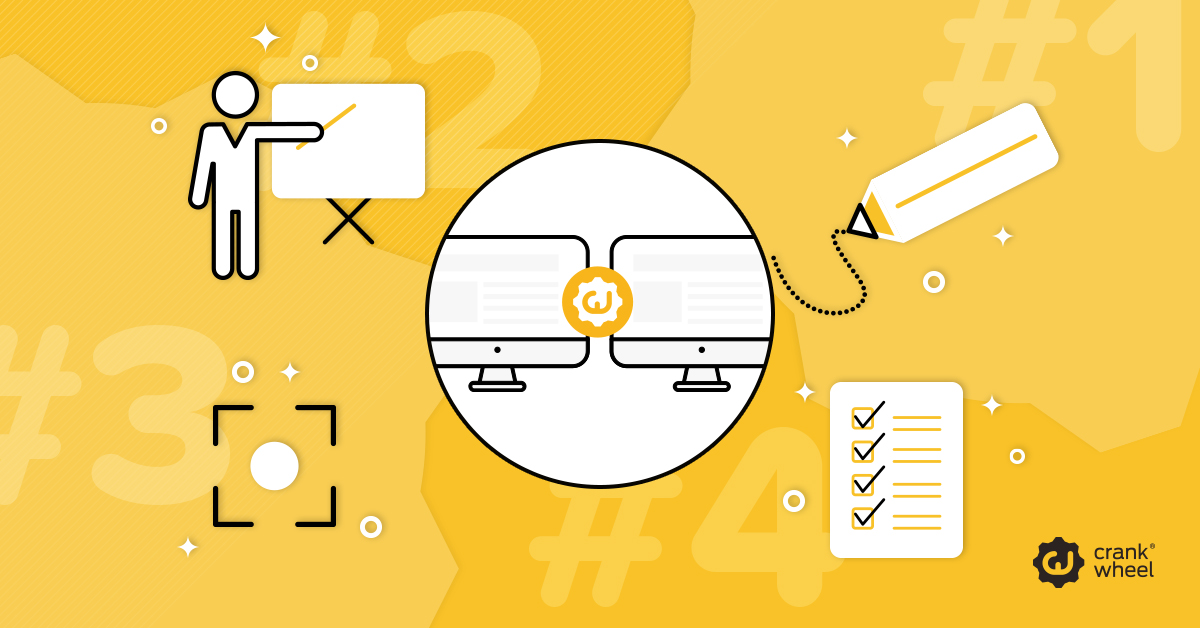Screen sharing 101: Introduce screen sharing and jump on live calls quicker
Show don’t tell is a powerful option to have when talking to sales prospect. Sure, you can tell them all about your product, its wonderful features and benefits: or you can show them.

Screen sharing apps give your sales team the option to jump on a live demo, soon as a prospect is ready. Instead of telling them all about a feature that will solve a certain problem, you can demonstrate how it is the solution they need.
In theory, this is exactly what salespeople should be doing. If a prospect can’t meet in-person, or you were going to talk on the phone; try screen sharing instead.
Most prospects are willing to try screen sharing as long as the experience is easy for them and they don’t need to download anything. However, one of the main problems is that experienced salespeople, who are used to in-person meetings and calls, aren’t always as effective when screen sharing. It can be easy to think that sales skills translate across any medium, any channel; but that isn’t always the case.
In this article we cover a few steps to take to make sure your team is ready for screen sharing.
#1: Have a presentation ready
A prospect says yes to screen sharing - they’ve got 15 minutes - what are you going to show them?
If you don’t know, then you aren’t ready for a screen sharing sales call. Have a roadmap for questions to ask and what to demo - for calls of different lengths - and based on the different device your prospect may be using. You need a different presentation if someone is at their desk with a manager - the budget holder, potentially - than on their smartphone.
Be prepared for every scenario.
#2: Training
A little training can go a long way.
Equip your team with the skills to engage those they can’t always interact with face-to-face. Make sales easier, whatever device is being used and wherever the prospect is.
CEO of WhatWorks, a presentation training company, Tom Drews, says that: “A salesperson who has been around a long time has sales skills, but typically they’re so used to presenting in person that they get a little bit too confident and don’t feel like they need to learn the skills or the tools.
Once they know how to present with the tools they’re using, you can be confident that a screen sharing call is going to be just as effective as an in-person meeting. Often, the challenge isn’t the tools. It is an inability to engage a prospect with the tools they’ve got available. Training can solve that problem.”
#3: Practice
After training should come some practice.
Have your team conduct mock screen sharing calls with each other, with managers and even sales training coaches. Treat this the same as other sales channels in training sessions. Make sure they’re ready and confident when making instant demo calls.
With a client’s permission, ask if you can record demos. Go over them in training sessions, so that best practice can be shared around the team.
#4: Prepare
Before jumping on a call, aim to have a list of questions already answered through your own research.
It can take a lot of effort to arrange a call with the right person. Don’t spend too much time asking questions you can find out other ways. Instead, either ask exploratory questions on a call beforehand, or use this demo to ask questions and showcase some of the key product features. The more you are prepared with different variations on your presentation or demo, the more likely you are able to go straight to the presentation after asking some questions, rather than having to book a follow-up call which will often get cancelled.
Practice active listening on the call. Asking open-ended questions should give you the information you need to outline how your product solves the challenges the prospect is dealing with. Armed with this, you can create a more detailed presentation or proposal, or arrange an in-person meeting.
Screen sharing instant demos are quick and easy ways to engage sales prospects with more information. A chance to show off the product and ask the right questions that should move a deal closer to a conversion.
Providing you are prepared, either with a presentation or a conversation roadmap, some questions to ask, and you’ve had some practice or training. With a team ready to deliver, you can be confident that every screen sharing experience will play a useful role in the sales pipeline.
